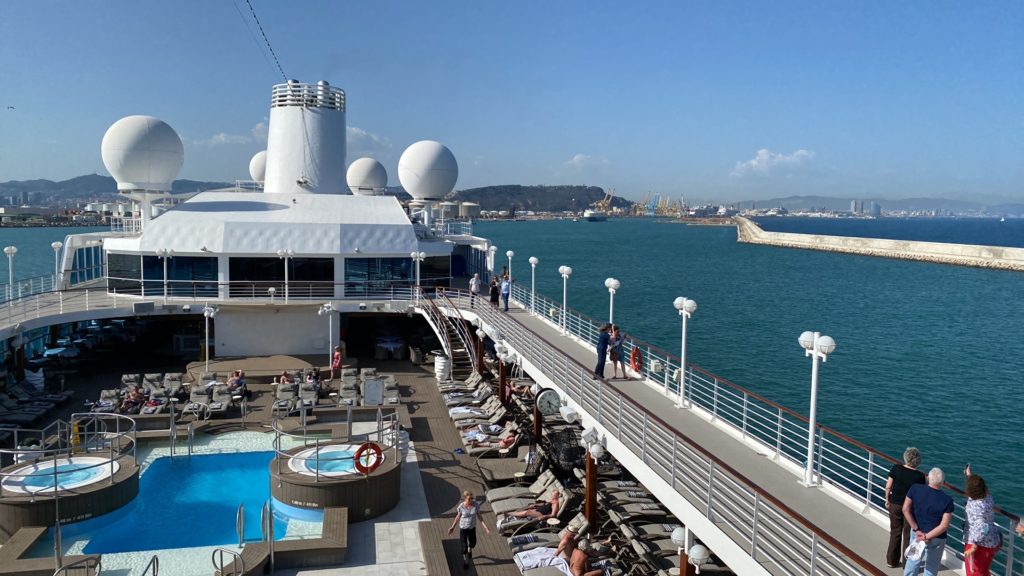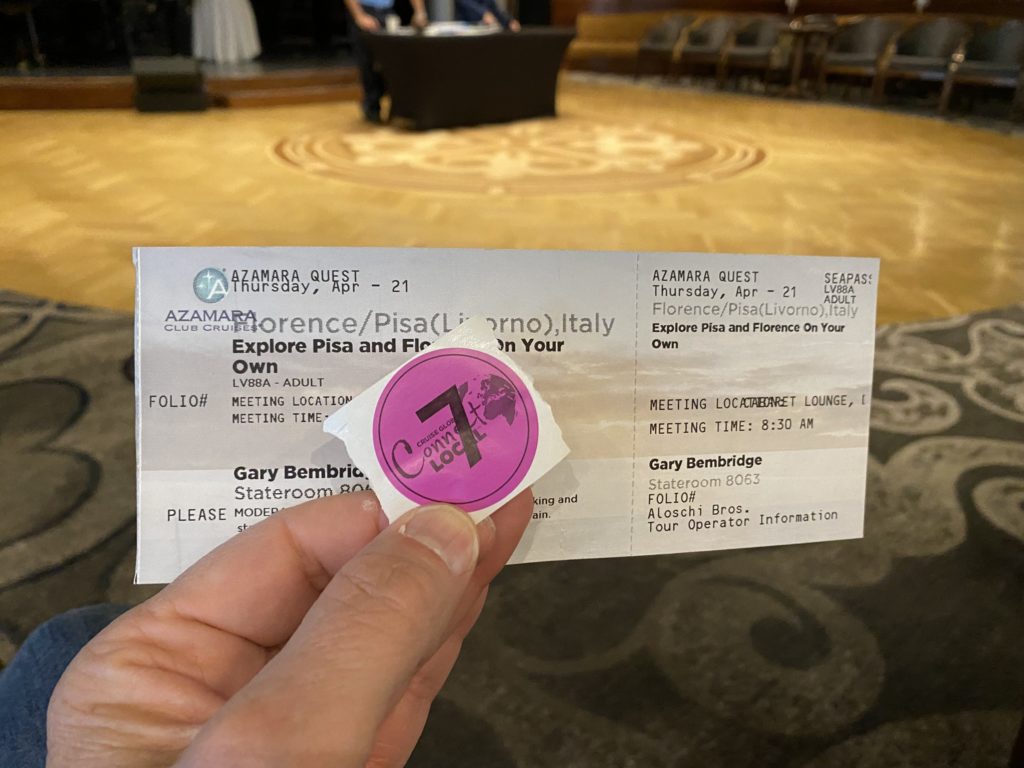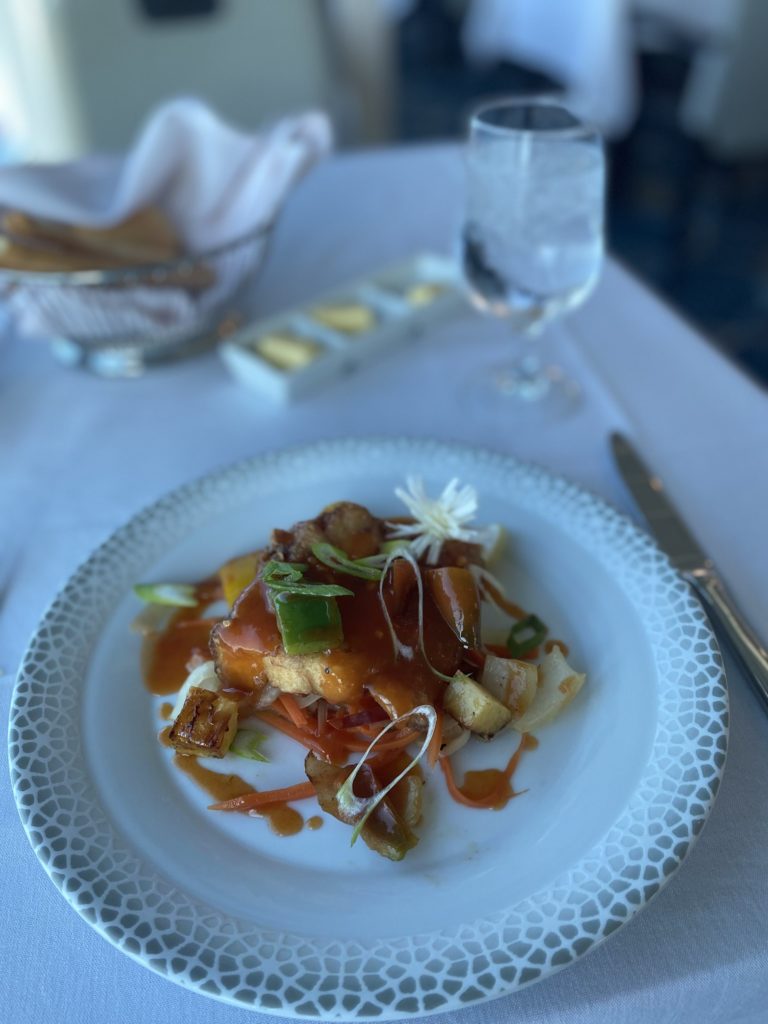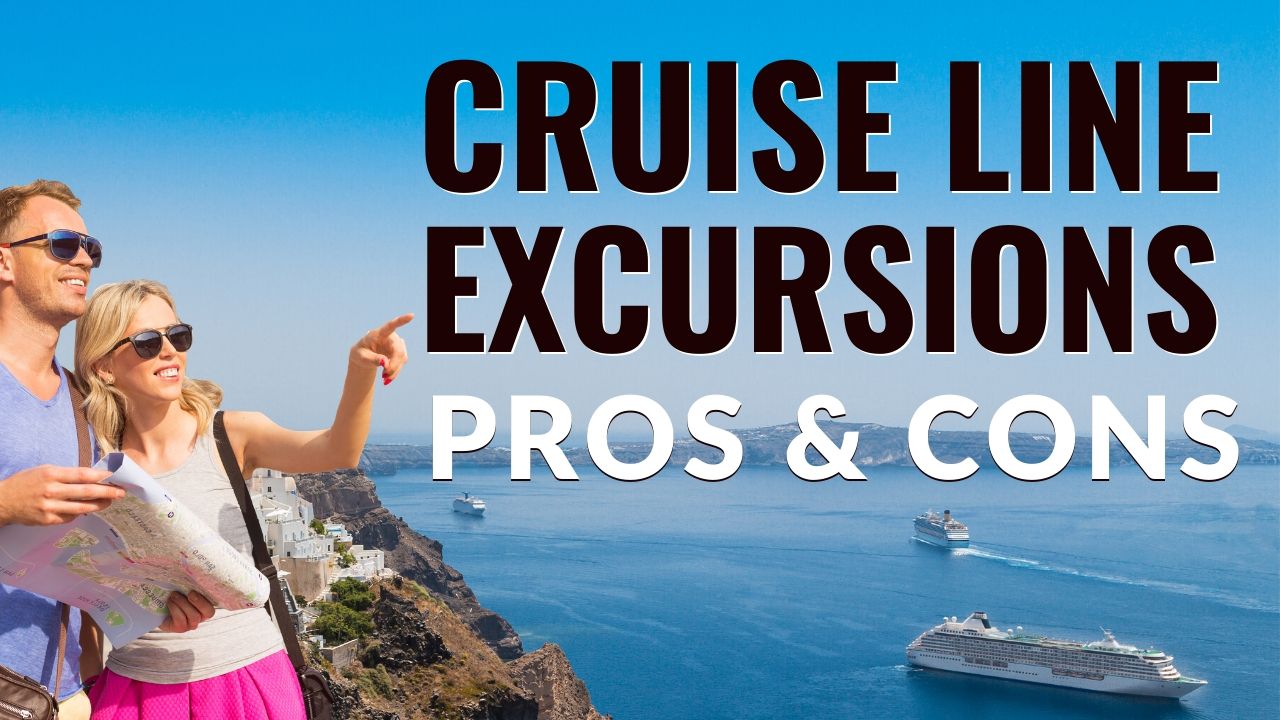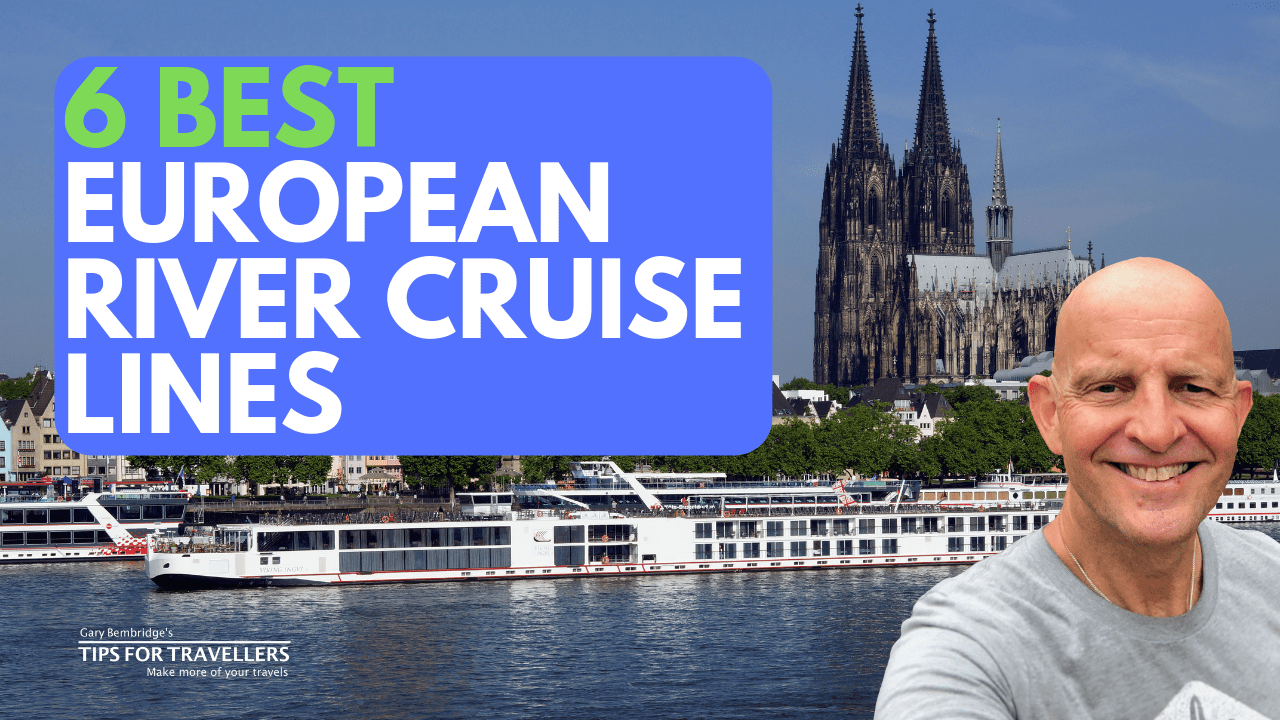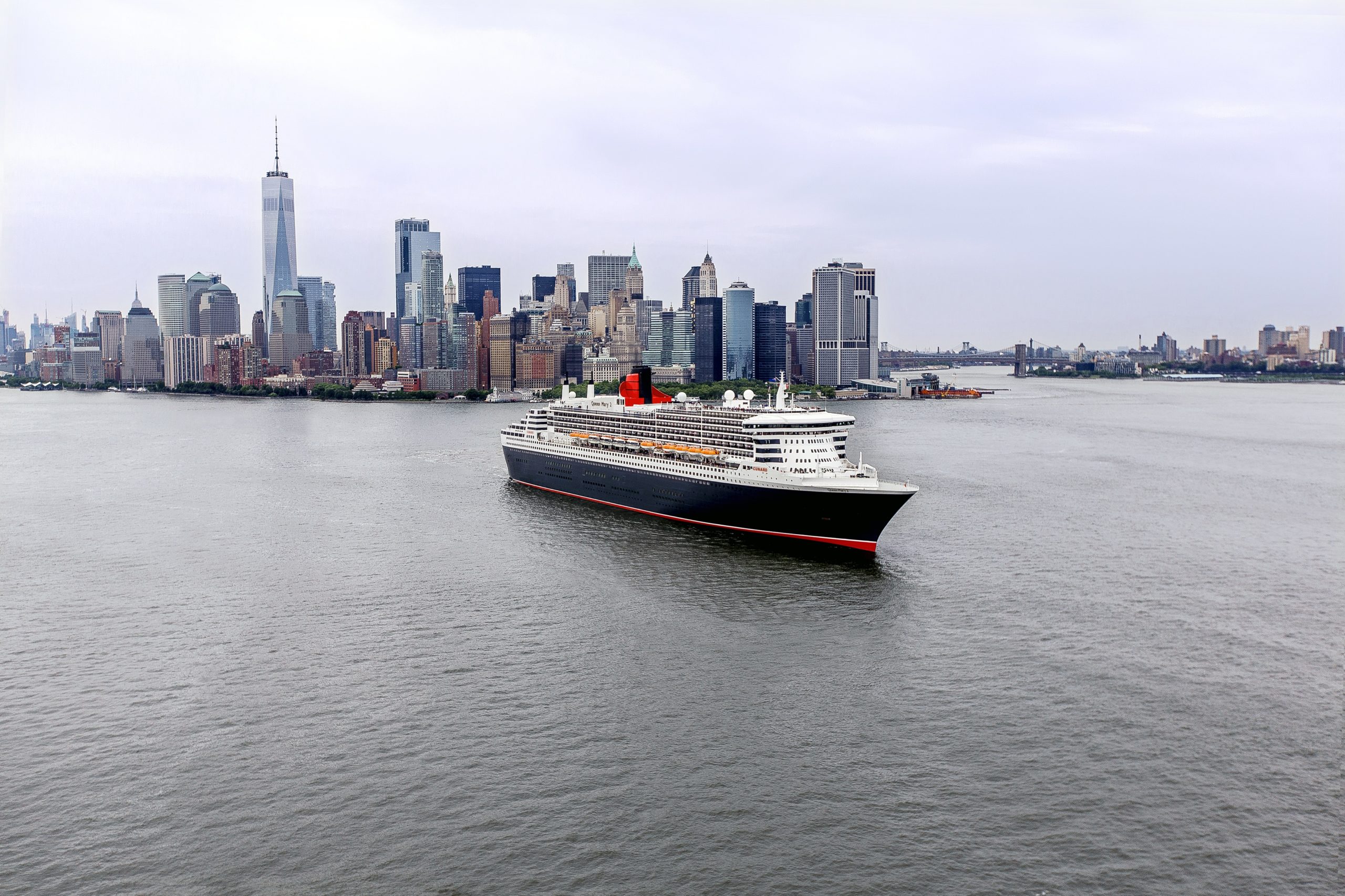Why Most Cruisers Have The Wrong Idea About Smaller Cruise Ships! Small-Ship Cruising Misconceptions
Why Most Cruisers Have The Wrong Idea About Smaller Cruise Ships
Before I went on my first smaller ship cruise I was told to watch out, as I would find myself unable to escape boring or annoying people. Why? Because the ship’s too small. Someone else told me the problem would be lack of atmosphere, as too few people onboard to make trivia, events and parties, buzzing.
These and other things made me wary. Until I clicked that all these warnings were misconceptions from people who had never been small-ship cruising.
I did find how one belief is right and could be a deal breaker for many, including you. Let’s look at why most cruisers have the wrong idea about smaller cruise ships.
What is Smaller?
First, what exactly do I mean by smaller ships? The industry includes ships of around 1,200 or fewer passengers here.
So, that ranges from ships like Oceania Marina (1,200), Viking Ocean ships (930) though R-class ships in the Azamara and Oceania fleets with around 700 guests. The ultra-luxury lines like Seabourn and Silversea with 600, down to the small Windstar and Star Clippers with fewer than 150 on some.
I’ve been on many smaller ship lines now including Azamara, Windstar, Fred Olsen, Silversea, Seabourn, Crystal, Ponant, Hapag-Lloyd, Hurtigruten, Oceania, Paul Gauguin, Voyages to Antiquity and Saga.
Let’s start with what I found are the upsides from these trips.
Upside #1: Service
Smaller cruise ships have a higher crew-to-passenger ratio, partly because they need a certain amount of crew to operate a ship. As an example, on my recent Azamara Quest and Seabourn Encore trips, there were double the amount of crew per passenger than I had on my recent Majestic Princess and Holland America Nieuw Statendam trips.
I found service more personal, where crew in all departments got to know my name quickly. They knew my preferences and started to pre-empt me by delivering things like Caffeine-Free Diet Coke ready at dinner. Even the crew at the coffee bar came to know I like skimmed milk. The shore excursions team remembered what trips I went on and were recommending similar ones.
On smaller ships I always feel I’m being looked after in a very personal way.
Upside #2: Getting Around Smaller Cruise Ships
The second obvious advantage: it’s easier to find my way around a smaller ship, partly as there’s fewer decks. While ships like Majestic Princess, that I mentioned earlier, had 19 decks, the Azamara Quest I was on the month before had 9 decks.
I can get the feel of the layout quickly, know where everything is and not miss any hidden venues within a short time of boarding. I’m just ready to focus on the trip and the destinations.
On larger ships it can take forever to get your bearings. I have often missed or forgotten about venues. Like I was almost through an entire cruise last year on Celebrity Silhouette before I realised (and found) that there was a huge Sky Lounge overlooking the bow.
It takes much less time to get around a smaller cruise ship. Popping from dining venues to the show takes just a few minutes rather than what feels like a marathon trek.
Upside #3: Kids
One thing I like is the more adult-only experience. There are no or only a few kids, even though only a few of the lines are officially adults only, like Viking and Saga.
Partly because of their size, but as they tend to be more destination and enrichment focused, they don’t have kids’ clubs, kids’ programmes, or family specific cabins.
Upside #4: Small-Ship Cruise Lines
When it come to smaller ship cruising, I love that with fewer guests, check-in and disembarking is an absolute breeze. When I was on that Azamara Quest trip, it literally took minutes boarding in Barcelona, the same on Viking Sky in Venice, and all the others.
The thing I also love is smaller excursion group sizes. The downside of that though, as I have seen, is they have minimum numbers to operate them, there are more frequent cancellations than on bigger ships.
On my Azamara Quest trip, they cancelled many excursions, and guests were upset because one of the reasons they’d chosen the Western Mediterranean itinerary, was to go and visit some of the places on specific excursions.
Upside #5: Small-Ship Cruising Itineraries
The fifth upside, and the reason that I now love going on small ship cruises, is the more intensive way to see a region.
Bigger ships can only go to certain ports that can handle their size. This limits and makes the itineraries basically the same, especially in the Mediterranean and Caribbean. Many of these ports tend to be working freight ports, too.
On a small ship, they can ease into out-of-the-way places, especially as fewer guests make mooring offshore and tendering guests far more manageable.
For example, when I was on Seabourn Encore in the Greek islands, we did exactly that at stunning tiny islands, many I hadn’t even heard of before. With us, the only ship visiting. While friends of mine on Celebrity Apex at the same time were calling only on big, well-trodden and tourist-packed destinations.
Also, when calling into the big popular ports on other smaller cruise ship trips, I found we often docked closer to the action. For example, recently, when I was in Marseilles, we were docked right in the centre of town, while the bigger ships were right out in the port.
When we were able to call on St. Petersburg, on Silversea we were docked right next to the Hermitage Museum. All the big ships were miles out. The same, too, in Ho Chi Minh City. Silversea was right in the centre of the city, while Queen Mary 2 was docked an hour and a half away.
Upside #6: Nickel & Diming
I have also found less nickel and diming on board. That’s partly because they don’t even have some of the departments, like a photographic department, as many shops or art auctions.
As I will talk about more later, smaller cruise ship fares often have more inclusions. So, unlike on bigger ships, I don’t feel that I’m constantly being squeezed for more money.
Upside #7: Food
One of the biggest upsides is smaller ship lines focus on food. Possibly because they have fewer diversions on board, food is more important. And there are more venues that I expected.
Oceania Cruises claim to have the “finest cuisine at sea” and reportedly spend more money per passenger on food than any other. But every smaller ship I have been on I found dining is an important part of the experience, with main dining room, buffet, and speciality options.
For example, on the Azamara ships and the smallest Oceania ships, like Insignia and Sirena, they have two specialty restaurants. And in addition to the main dining room and buffet, they have a grill-style dining on the pool deck with burgers and informal dining.
On most small cruise ships, specialty dining is included. I think the only exception to that is Azamara.
So, they are the upsides I found. What are the downsides and the big ‘possible’ deal breaker?
Downside #1: Too Much Motion
Many cruisers tell me they are nervous about small ship cruising due to more motion, and so greater risk of sea sickness.
I do find bigger ships tend to be more stable, and that smaller ships do move around more. Particularly if you’re in the front of the ship or at the rear of the ship, you do feel it much more.
Even when I was on Paul Gauguin in French Polynesia, which doesn’t have particularly rough seas, I could feel movement more than I expected. Sailing to Iceland on both Voyages to Antiquity and Saga Sapphire was noticeably bouncy.
So, people that suffer from motion sickness can find it less comfortable.
Downside #2: Passengers
As I said at the start, I was warned about bumping into the same people, or as they put it, “being stuck with boring people”.
I find that staying anonymous is a more of a challenge on a smaller ship. Although I can, of course, be as sociable or as antisocial as I like.
But I discovered a flip side for people like me, who are and not great at talking to strangers. It easy to meet incredible people because you do see them around frequently.
I have met and built some of the strongest cruising friendships on smaller ships, Cammy and Jim who I met on Oceania, John and Simon on Seabourn, and Ben and Sarah on Queen Mary 2. People I have kept in contact with and met up with.
I’ve met so many interesting people, because I think travellers attracted to smaller ships, and quirky and interesting destinations tend to have even more interesting backgrounds and stories.
Downside #3: Choice
Of course, there is less choice, fewer venues, and a much slimmer daily programme. Compare the daily programme from 2 of the recent cruises I spoke about, one from Azamara Quest small ship and one from Majestic Princess. Huge difference in amount going on.
It suits me as when I’m on vacation, I want to unwind and don’t need lots of entertainment laid on.
I am happy with the choice of dining, having a theatre lounge with nightly singers, a bar or two with some live music, a fitness room, spa, coffee shop and a lounge overlooking the bow to hang out in and a pool and hot tubs.
But you may need more, like my partner, Mark. He wants big glitzy production shows, a large and busy casino, and a packed fitness class programme. He is much less keen on small ships, unless we’re going for a port-intensive tour of a region. Like the Greek islands.
Downside #4: Couples Only
Leading on from that, a downside of smaller ship cruising is they cater incredibly well for couples, but if you’re a solo traveller, much less so.
I cruise often without Mark and very few smaller ship lines have solo fares or solo cabins.
Although I am seeing one or two starting to introduce it, like Oceania, I often must pay the same as if I was travelling with him. It’s a big ask.
Downside #5: Deal Breaker
On the issue of price, probably the biggest downside is price even when travelling as a couple.
Although I have some cheaper options, smaller ships tend to be in luxury lines like Oceania, Azamara, or Windstar, and ultra-luxury ones like Regent Seven Seas, Seabourn, and Silversea.
During the pandemic, lines like Holland America and Princess sold off their smaller cruise ships.
And as those still sailing the smaller ships have many more inclusions, that pushes the price up, too.
If I go on a resort ship with over 3,500 passengers like the Royal Caribbean, MSC, Carnival, and Norwegian, I can easily get a balcony cabin from $100 to $200 per person, per night. But a balcony on smaller ships, range from $400 per person, per night, on lines like Azamara and Oceania up to $800, on Seabourn, so it’s four to eight times more.
There are some smaller ship value lines, like Fred Olson out of the UK, UnCruise, G Adventures, and CroisiEurope, some of the American cruise lines particularly, doing some of the great lakes.
Price is a big deal breaker for many.
If it is for you, watch this video where I compare each of the 4 big cruise categories and recommend the best line in each right now, starting with the best value. See you over there!
You can also read more on my cruising tips here.
Join me on my upcoming sailings!
SUPPORT TIPS FOR TRAVELLERS
- Find out about being a YouTube Channel Member: https://www.tipsfortravellers.com/Join
- Find out about being a Patron on Patreon: https://www.patreon.com/tipsfortravellers
- Check out my T-Shirt range: http://bit.ly/TFTStore
FOLLOW ME ON SOCIAL MEDIA
——————————————-
- YouTube: http://www.youtube.com/tipsfortravellers
- Twitter: http://www.twitter.com/garybembridge
- Facebook: http://www.facebook.com/tipsfortravellers
- Instagram: http://www.instgram.com/garybembridge
- LinkedIn: https://www.linkedin.com/in/bembridge
- TikTok: @garybembridge

